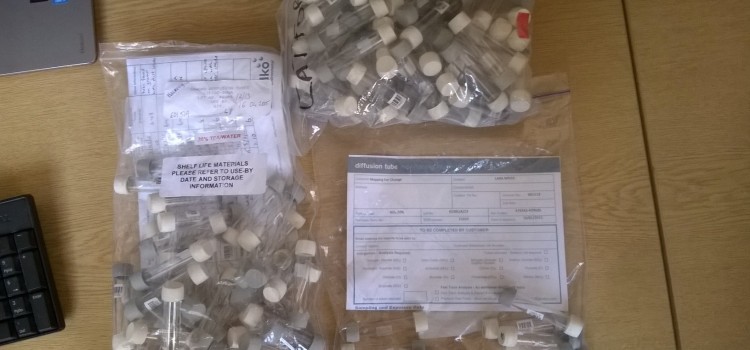
In February, Mapping for Change equipped four community groups with all the materials needed to measure Nitrogen Dioxide (NO2) in their local areas. One month and four Citizen Science initiatives later, and the data from Clean Air in London’s air quality monitoring projects has been returned for analysis.
Small plastic tubes are used to measure nitrogen dioxide levels. The tubes work through a process called ‘molecular diffusion’, where substances move from an area of higher concentration to one of lower concentration; in this case, NO2 moves from the surrounding air into the absorbent cap at the end of the tube. This absorbency means that the process of diffusion can continue, as it does not alter the concentration in the tube itself. You can find more information on how these tubes work on Gradko’s website, by clicking here.
It is recommended that the tubes be exposed for between 2-4 weeks in order to get an accurate data reading. The four communities involved in this round of air quality monitoring have had their tubes in place for a month. Unsurprisingly, many of them were very dirty from all the exhaust fumes!
After a long day processing the tubes and survey forms, Mapping for Change have organised all the materials and dispatched them to the lab, Gradko. Mapping for Change will receive results from the laboratory in several weeks. The data we receive will show NO2 in parts per billion (ppb) and micrograms per metre cubed (ugm-3 ).
At this point, Mapping for Change will visualise this data on a map, and share the results with community groups. It is then up to the communities what actions they wish to take. Mapping for Change can provide support: whether they choose to utilise this information to lobby local authorities and decision-makers, or simply to make changes to reduce their personal exposure to NO2.
Are you concerned about air quality in your local area? Contact us to find out how you could participate in a Citizen Science initiative.